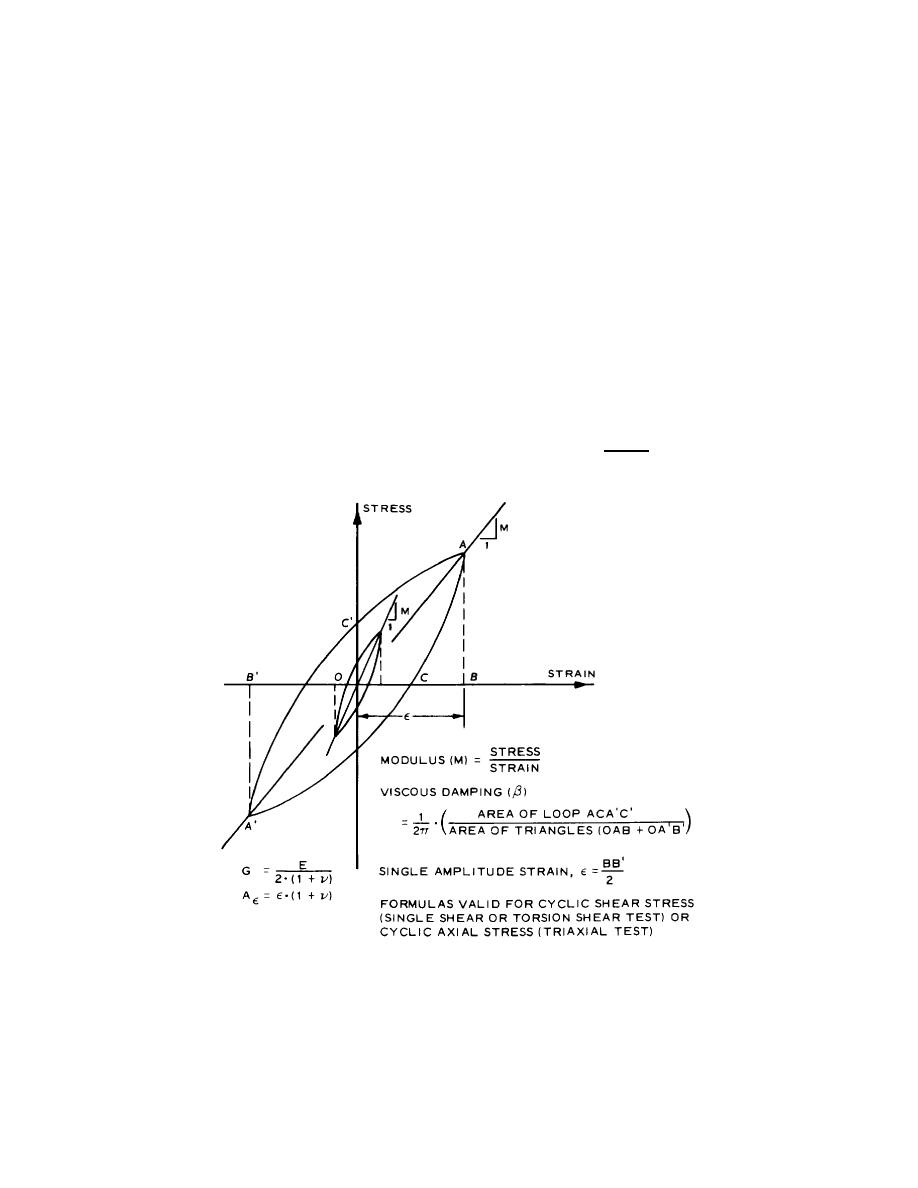
TM 5-818-1 / AFM 88-3, Chap. 7
c. Laboratory measurement of dynamic
hysteresis loop, and the strain level is taken as the
stress-strain properties. Low shear-strain amplitude, i.e.
single-amplitude (one-half the peak-to-peak amplitude or
-2
origin to peak value) cyclic strain for the condition during
less than 10 percent, shear modulus data may be
that cycle of the test. Note that the equations for modulus
obtained from laboratory tests and usually involve
and damping shown in figure 17-9 assume the soil
applying some type of high-frequency forced vibration to
behaves as an equivalent elastic viscous, dampened
a cylindrical sample of soil and measuring an appropriate
material, which is linear within the range of strain
response. Some types of tests allow the intensity level of
amplitude specified. This assumption is usually made in
the forced vibration to be varied, thus yielding moduli at
most soil dynamics analyses because of the low-
different shear strains.
vibration amplitudes involved. If the cyclic hysteresis
(1) High strain-level excitation, i.e. 0.01 to
loops are obtained from triaxial test specimens, the
1.0 percent, may be achieved by low-frequency, cyclic
resulting modulus will be the stress-strain modulus, E. If
loading triaxial compression tests on soil samples. The
the tests involve simple shear or torsion shear such that
modulus, damping, and strain level for a particular test
shear stresses and strains are measured, the resulting
are calculated directly from the sample response data.
modulus will be the shear modulus, G. In either case,
The usual assumption for calculating the modulus and
the same equations apply.
damping from forced cyclic loading tests on laboratory
(2) The shear modulus, G, can be
samples is that at any cyclic strain amplitude the soil
computed from the stress strain modulus and Poisson's
behaves as a linear elastic, viscous, damped material.
ratio as follows:
A typical set of results may take the form of a hysteresis
loop as shown in figure 17-9. Either shear or normal
G
=
E
(17-21)
stress cyclic excitation may be used. The shear modulus
2(1+)
is calculated from the slope of the peak-to-peak secant
line. The damping is computed from the area of the
U. S. Army Corps of Engineers
Figure 17-9. Idealized cyclic stress-strain loop for soil.
17-12


 Previous Page
Previous Page
